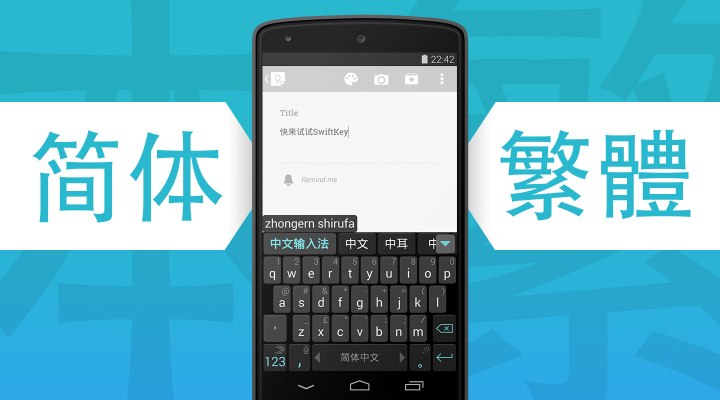Predictive keyboard maker SwiftKey, which is backed by investors including Index and Accel, has finally launched a Chinese beta of its software on the Android platform. This follows the launch of SwiftKey for Japanese beta back in May.
This time last year the U.K. startup — which was founded back in 2008 — told TechCrunch the two Asian languages were the big outstanding projects on its language support to-do list. It also added a raft of Indian languages last month, in another beta update, so its Far East focus is clear.
Factoring in all these various betas, SwiftKey told TechCrunch its total languages on Android is now 92.
The new Chinese SwiftKey beta supports users of Simplified Chinese, Taiwan Traditional Chinese and Hong Kong Traditional Chinese, and includes seven new input methods to give users a choice about how they type the character-based language — including Qwerty/full key and 12-key Pinyin and ZhuYin (Bopomofo) input methods, and also stroke input. Cangjie and quick Cangjie inputs are also supported.
In a blog announcing the Chinese beta, SwiftKey said it has tweaked its software to cater for the fact certain Pinyin sequences can represent multiple Chinese characters — using its machine learning smarts to predict which word an user is most likely to be typing. SwiftKey’s Heatmap Correction feature, which learns how a user types on the touchscreen to help correct for typos, has also been optimized for Chinese, it said.
Currently there’s no support on the Chinese beta for Flow, SwiftKey’s finger-dragging input method. Predictive emoji is also not yet supported.
While SwiftKey adding support for Chinese is certainly a key milestone on the road to opening up its software to China’s massive local market, this beta version is only a stepping stone on that road — given that it distributes via the Google Play store it’s not yet well placed to target the bulk of the domestic Chinese market. So the current beta is likely to be targeting global users wanting to use Chinese.
However TechCrunch understands the company is in talks with Chinese mobile manufacturers, including fast growing Xiaomi, plus ZTE, TCL and Gionee, about getting its software preloaded onto devices. Working with Chinese OEMs is going to be key for SwiftKey to circumvent the local app distribution hurdle in China, given that Android commonly ships with various alternative third party app stores in the market, rather than Play.
The launch of the Chinese beta also coincides with SwiftKey opening up a Hong Kong subsidiary to better target China and other Asian markets. It’s clearly gearing up for a big Asian push — to capitalize on strong regional smartphone growth.
Commenting on the launch in a statement, CEO and co-founder Jon Reynolds said: “We’ve been clear about our plan to support Chinese for a long time so we’re pleased to launch this beta and bring the keyboard that learns from you to Chinese speaking users. We look forward to hearing the feedback of our existing users, welcoming new users and engaging more closely with partners in China.”
The Chinese beta can be downloaded from SwiftKey’s community forum here.
